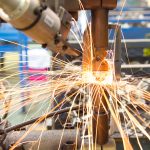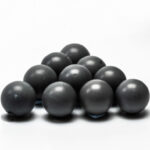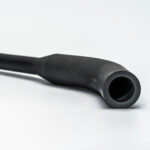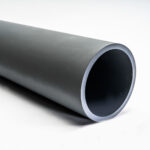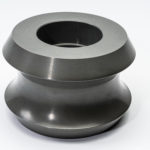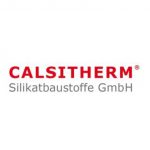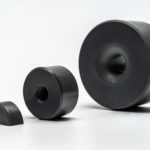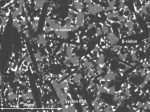The properties of advanced ceramics make them extremely valuable in a wide range of industrial applications, like transportation, aerospace, and manufacturing. Most advanced ceramics are imbued with a crystalline or semi-crystalline structure, meaning they have improved thermal, electrical, and mechanical attributes. Moreover, advanced ceramics are specifically designed with a microstructural composition that is consistent to maintain the ceramic’s enhanced characteristics.
Continue readingUnderstanding the Hidden Costs of Milling Media
Milling media is a critical component in the materials processing industry. It plays a pivotal role in the mechanical reduction of particle size in a vast array of raw materials and products, from pharmaceuticals to ceramics and metals.
Continue readingShot Blast Nozzle Shape, Size, or Material: Which Matters Most?
In the specialized field of surface treatment, shot blasting emerges as a key technique. At the heart of its success is the shot blast nozzle. This is a component that has a design that can significantly influence the final results of your treatment.
Continue readingWhy Choose Ceramics for Immersion Heater Tubes?
A ceramic heater tube can be used in environments that require corrosion or abrasion resistant materials or need high temperature resistance. This makes them perfect for equipment used in temperature-specific industrial processes.
Continue readingHow Ceramic Welding Rollers Can Shorten Lead Times
Innovation is often the answer to process inefficiency. Manufacturers routinely look to develop new systems that address specific pain points in industrial manufacturing. Welding rollers, for example, unlocked greater levels of throughput and product quality in longitudinal seam welding and high-frequency electric resistance welding (HF-ERW). These relatively simple components allowed for accurate positioning and conveying of cylindrical workpieces throughout key processes. This enabled manufacturers to break new ground in operational efficiency. But conventional pipe rollers are not without issue.Continue reading
Festive Holidays Notice
International Syalons (Newcastle) Ltd. offices will be closed from Friday 22nd December 2023 until Tuesday 2nd January 2024.
How Technical Ceramics Can Help Avoid Automated Assembly Downtime
Downtime in automated systems represents an immense challenge in today’s manufacturing world. In an era where efficiency and timely delivery are paramount, even slight halts in the production process can incur significant costs and delays. But what if there were advanced materials, specifically technical ceramics, poised to make a difference? As we venture deeper into the realms of advanced manufacturing processes, we’ll uncover how these ceramic materials can mitigate the daunting costs associated with downtime.Continue reading
International Syalons – Calsitherm Group: 5 Year Anniversary
International Syalons are proud to celebrate 5 years as part of the Calsitherm Group.
How Does Microstructure Affect Ceramic Properties?
Understanding the relationship between microstructure and ceramic properties is essential for the development of high-performance, advanced ceramic materials. Ceramic materials, particularly silicon nitride ceramics, exhibit a variety of unique properties, such as high strength, thermal shock resistance, and oxidation resistance, making them ideal for demanding applications. However, these properties are highly dependent on the material’s microstructure, which is governed by parameters such as grain size, shape, and distribution.Continue reading
What is Alpha-Sialon?
There are a plethora of applications worldwide that benefit from using technical ceramics because of their high strength, thermal stability, and other unique advanced properties, and industrial processing is no exception. Ceramics play an important role in cutting tools, high-temperature furnace components, and high-wear applications, as they can withstand harsh environments. One ceramic material with very interesting properties is alpha-sialon. Sialons were developed as a cost-effective alternative to silicon nitride and are more often found in three useable phases, one of them being alpha-sialon. This post will provide an overview of alpha-sialon’s structure, primary applications, and benefits.Continue reading

